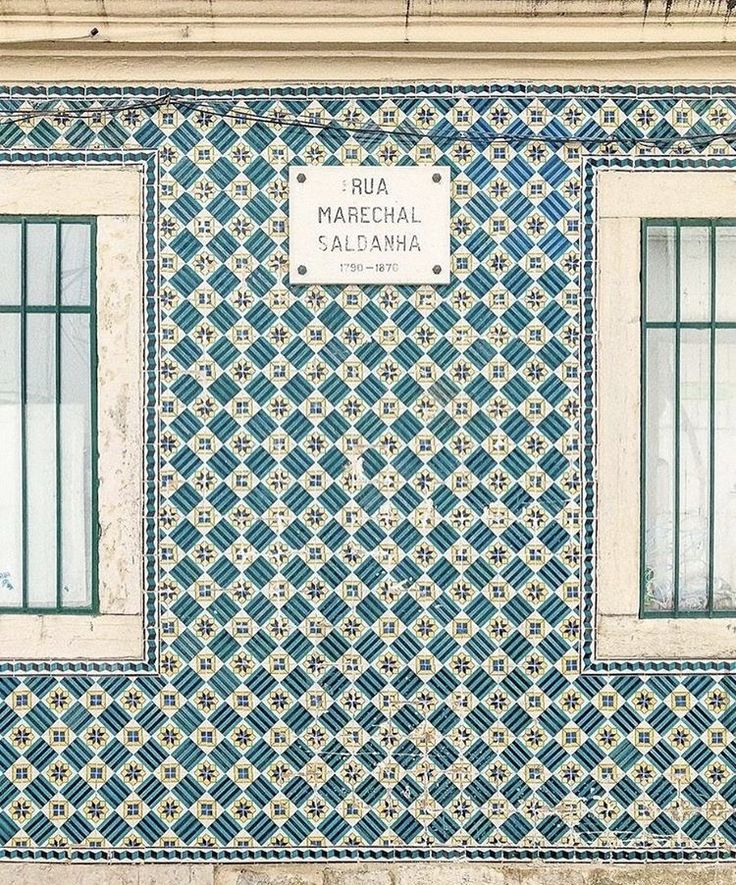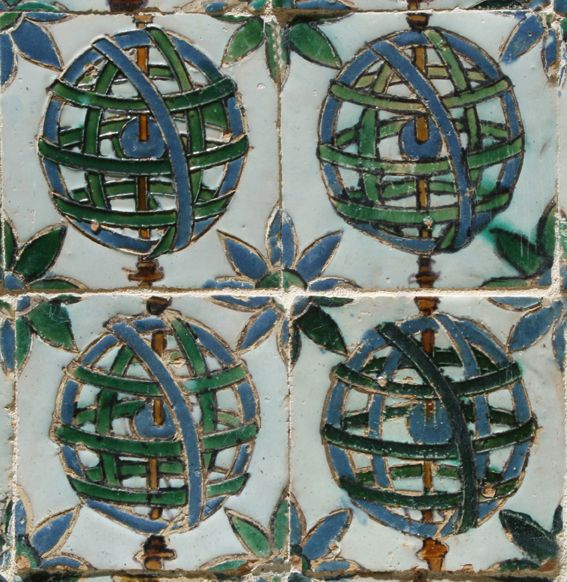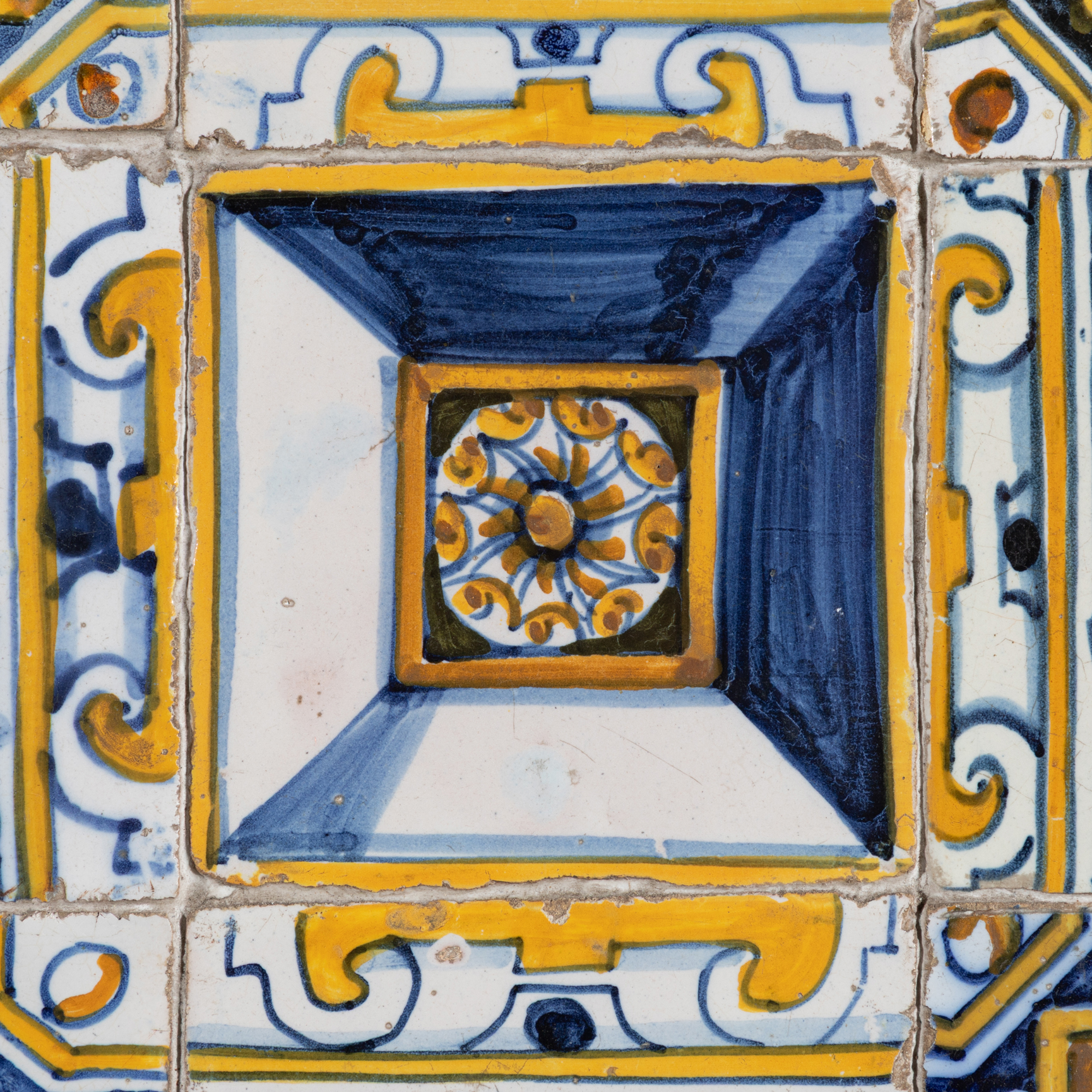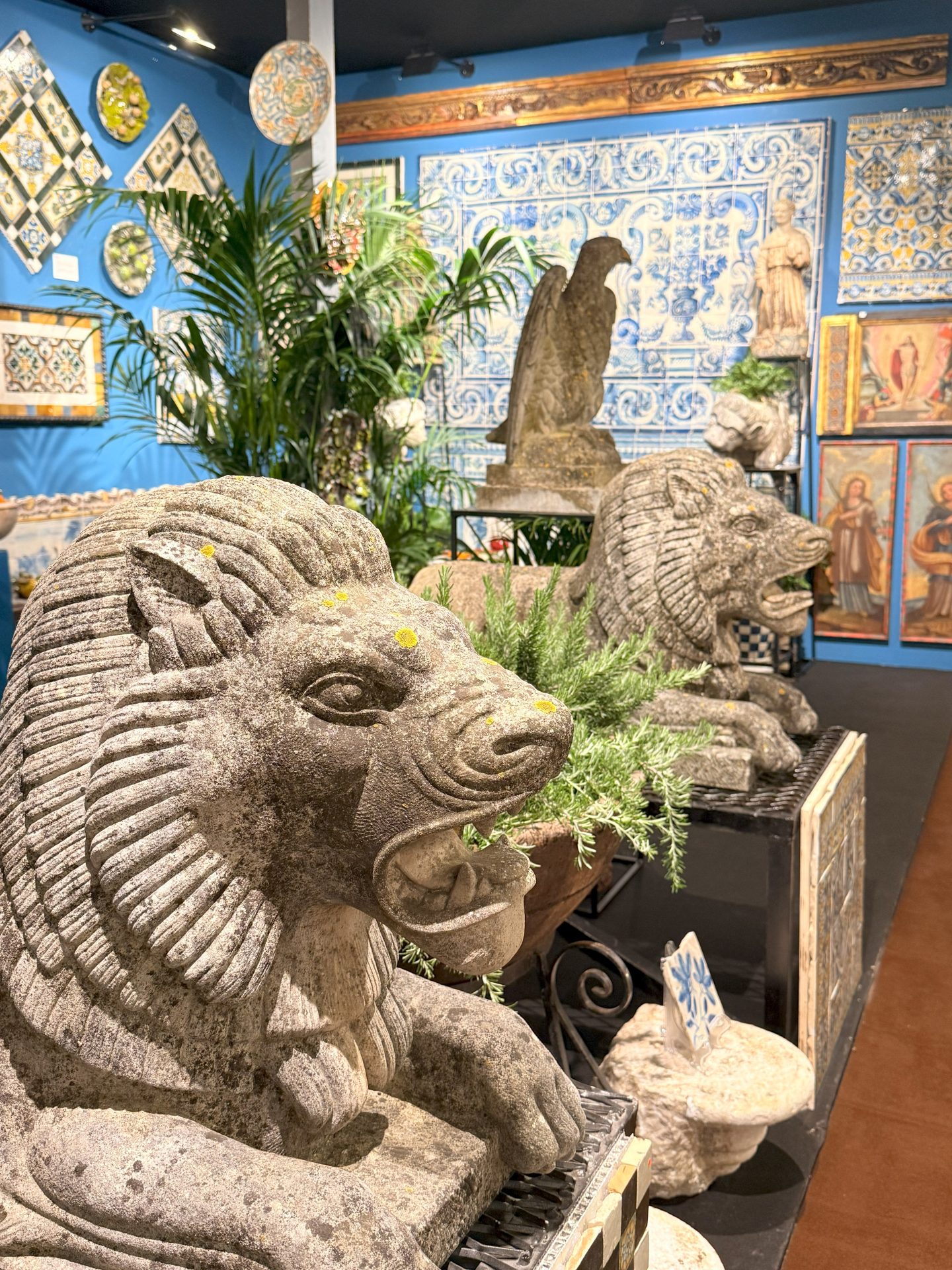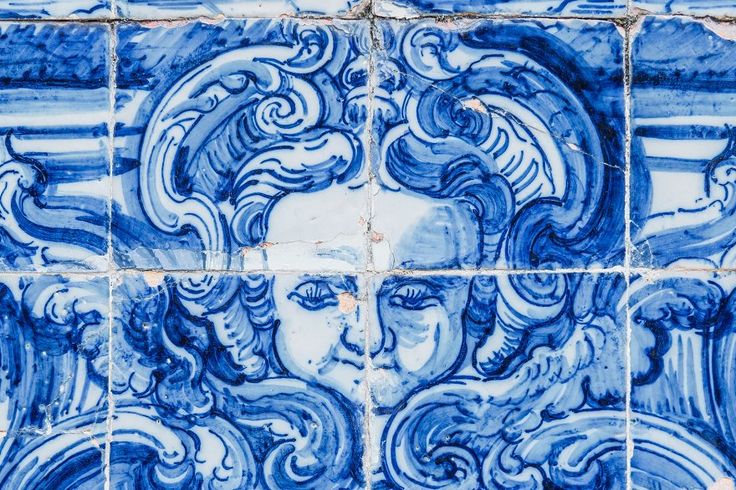
The Azulejo in Portugal
The history of azulejo art is both rich and complex. The art of tilework in Portugal has deep roots that trace back to the Muslim influence on the Iberian Peninsula between the 8th and 14th centuries. However, it was in the 16th century, with the importation of tiles from the cities of Seville and Toledo, that this tradition began to flourish in Portugal. Initially, geometric patterns and blue-and-white tones were predominant, reflecting both Islamic heritage and the chromatic aesthetics of the Renaissance and Mannerism.
The begining of the production in Portugal
In the 17th century, Portugal began to develop its own distinctive style, with local production of decorative tiles, primarily featuring geometric patterns in polychrome—most commonly blue, white, yellow, and occasionally green.
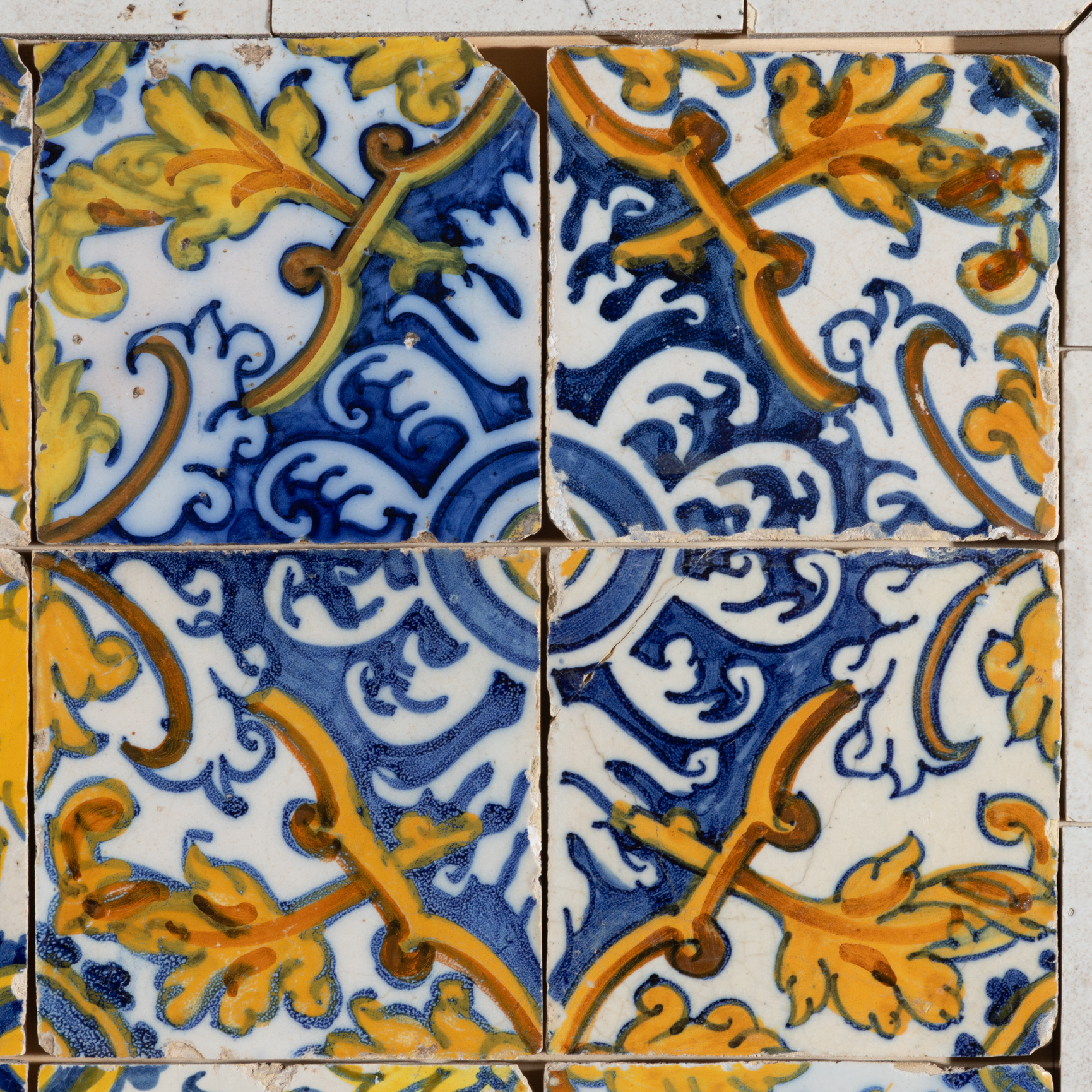
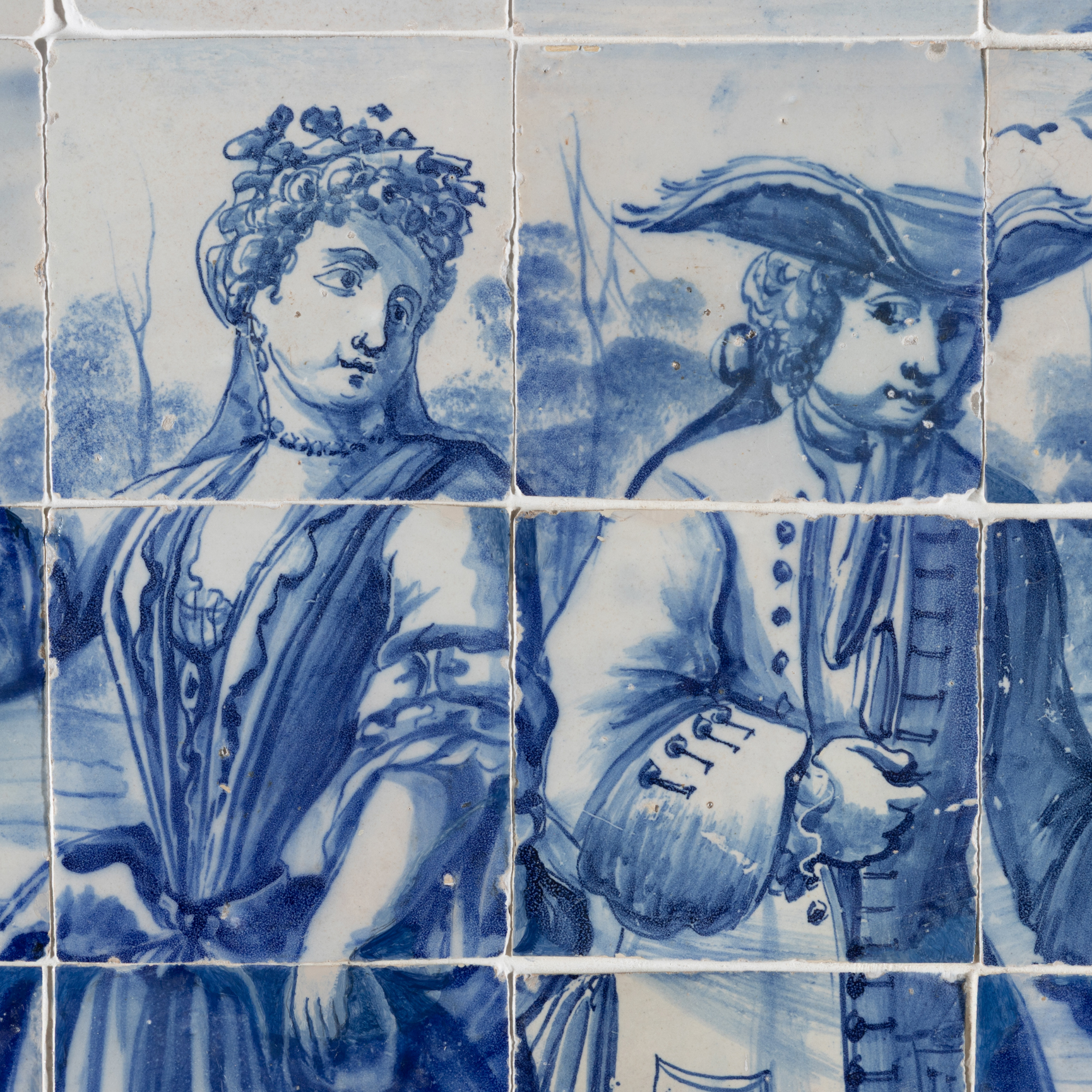
The golden Age
During the Baroque period, in the 18th century, tiles became even more elaborate, covering the façades of churches, palaces, and public buildings with large narrative panels that began to depict biblical scenes and everyday life. The use of cobalt blue, inspired by Chinese porcelain from the Ming dynasty, which began to arrive in Portugal in the late 17th century, became a distinctive feature of Portuguese tilework.
The utilitarian tile
In the 19th and early 20th centuries, tilework underwent transformations, incorporating styles such as Neoclassicism and Art Nouveau.
In the 20th century, artists of the new modernity, such as Querubim Lapa, renewed the tradition. Today, tile continues to be an essential part of Portuguese heritage, found in train stations, historic buildings, and even urban art, keeping this centuries-old tradition alive.
